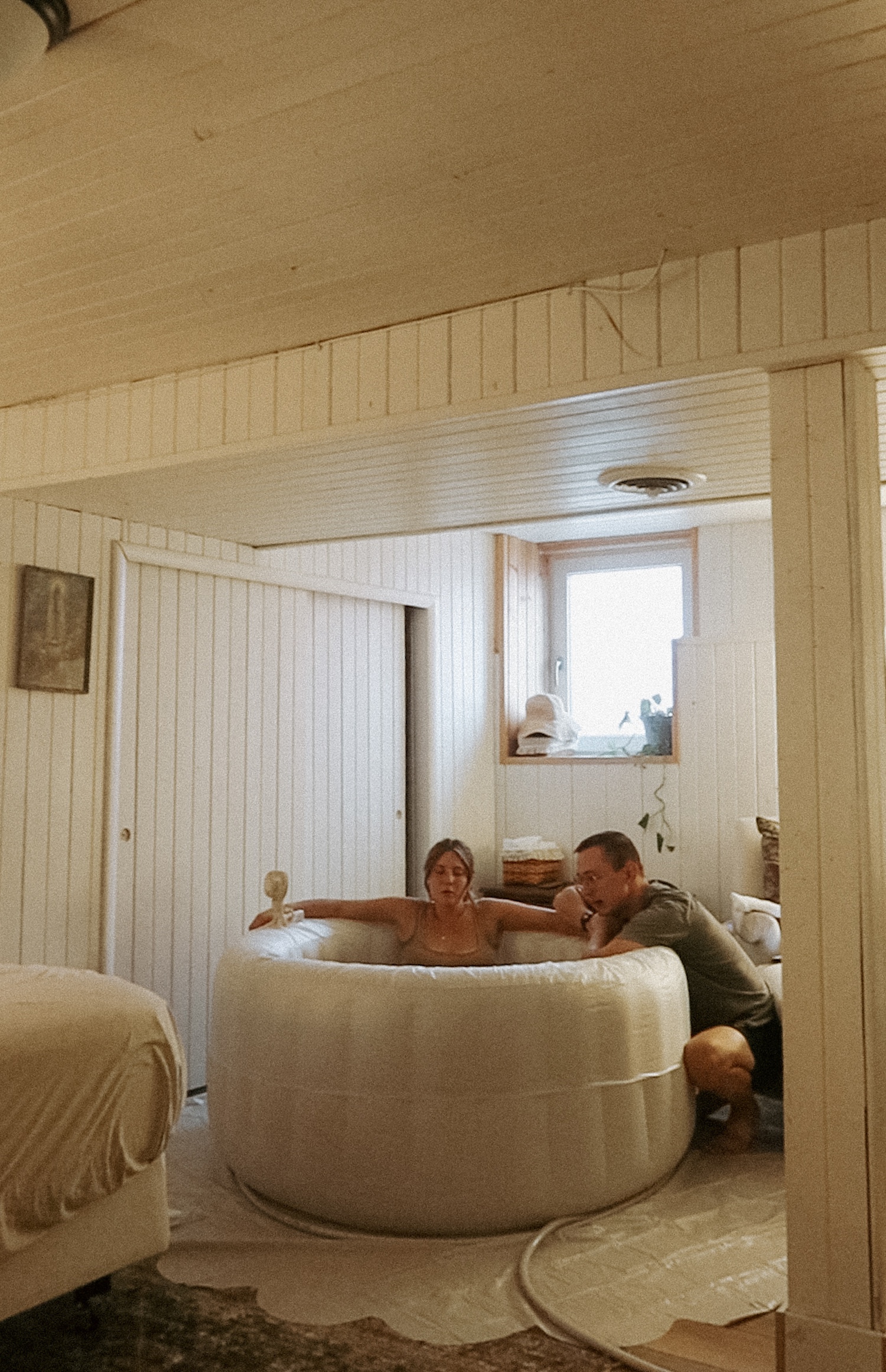categories
browse Around
If Jesus is your best friend, you love warm weather, an unhealthy amount of coffee, country indie folk music, granny hobbies or a good ole adventure to name a few - I'd think we'd make great friends! If not, no need to fret you're valued and welcomed here, too!
a North Dakotan girl through and through, wife, mother and die hard Catholic.
hey there, I'm Sarah

Pain Management During Childbirth
There’s a sacred weight to childbirth—the mingling of joy, anticipation, and yes, pain. For many women, the thought of labor can feel intimidating, but pain in childbirth is not meaningless. It has a purpose, and it’s temporary. When we prepare our bodies and hearts, we can step into labor not with fear, but with peace and even reverence for the work God is asking us to do.
Here are some faith-rooted and practical ways to manage pain during labor—tools that support both body and soul.
1. Preparing Body and Soul
Think of pregnancy as a season of gentle training for the marathon of birth.
- Physically: Stretching, pelvic floor therapy, chiropractic adjustments, and plenty of rest help keep the body aligned and strong.
- Nourishment: Whole foods, hydration, and things like red raspberry leaf tea can support uterine tone and overall health.
- Spiritually & mentally: Labor becomes more manageable when we remember that pain has a purpose. It’s temporary, transformative, and can even be offered up as prayer—for loved ones, for souls in need, or for gratitude for the new life on the way. Part of the battle is mental and mindset.
2. The Labor Comb
It may sound simple, but squeezing a comb in your hand during contractions can be surprisingly effective. The pressure activates acupressure points, helping redirect the brain’s focus away from pain.
3. Water as Comfort
Water soothes in a way little else can. Whether it’s a warm shower, soaking in the bath, or a birth pool, hydrotherapy relaxes the body, eases tension, and allows contractions to feel more manageable.
4. Using Gravity
Upright positions—walking, squatting, or slow dancing with your support person—help the baby descend and keep contractions effective. Movement encourages progress and often brings more comfort than lying flat.
5. Essential Oils for Nausea
Labor can sometimes stirs waves of nausea for laboring mothers. Gentle essential oils like peppermint or lemon can calm queasiness and refresh the mind. A cotton ball or diffuser nearby can make a big difference. If not for that just the overall feeling of your laboring environment as a whole.
6. A Holy, Peaceful Environment
Birth is most supported when a woman feels safe and calm. Dim lighting, soft music (hyms, Gregorian chants, instrumental classical or whatever bring the most ease to your environment), cozy blankets, and perhaps a favorite prayer card or holy image all create an environment that whispers peace. When the space feels cozy and prayerful, the body naturally opens and responds.
7. Counterpressure & Massage
Support people can join in the work through pelvic squeezes. By gently pressing or squeezing the hips during contractions, tension is eased, and pressure is relieved in the lower back and pelvis. Firm pressure on the lower back, sacrum, or shoulders during contractions helps relieve intensity. Gentle massage between contractions can release tension and promote relaxation.
8. The Comfort of Heat
A heating pad or warm compress applied to the lower back or belly provides soothing relief, much like it does with sore muscles. The warmth encourages relaxation and lessens discomfort.
9. Moving with the Moment
Labor is dynamic, and no single position will feel right the whole time. Listen to your body—kneel, lean forward, sway, or shift as needed. Movement helps pain feel more manageable and often encourages labor to progress.
10. Breathwork & Prayerful Breathing
Breathing slowly and deeply during contractions not only oxygenates your body but also calms the nervous system. Pairing each inhale and exhale with prayer (like a Hail Mary or simply repeating “Jesus, I trust in You”) transforms the rhythm of labor into worship. When you take a deep breath in expand your chest and when breathing that breath simultaneously push/expand your belly out (imagine a balloon filling up) to relax and open up your pelvis creating more space for baby to work down instead of tensing your vaginal opening if you’re resisting the contraction.
11. Birth Ball (Exercise Ball)
Sitting, rocking, or leaning over a birth ball can ease pelvic pressure, support upright positions, and keep the body relaxed while still allowing movement.
12. Rebozo Sifting
This one I have not personally utilized myself but I know some mother’s have during their labor and have enjoyed it! Using a rebozo (a long woven scarf) around the hips or belly, your partner or doula can gently rock and “sift” your body, providing comfort, repositioning baby, and easing pressure.
13. Vocalization
Another one that personally for me that doesn’t fit my needs when laboring but for some can bring so much comfort in making low, open sounds (humming, moaning, or even singing a hymn softly) helps the body release tension. High, tight sounds can work against you—low tones invite openness. I tend to switch this one out with repeating any of the birth affirmations or phrases quietly to myself!
14. Visualization & Scripture Meditation
Guided imagery—like picturing waves, opening flowers, or even meditating on Scripture/through the mysteries of the rosary. Even something like having a fixed focal point like holding a crucifix or a rosary in your hands can help.
Closing Thoughts
Pain in labor is not something to fear—it is the holy work of bringing life into the world. With preparation, small comforts, and prayer woven throughout, pain can be transformed into something sacred.
Each contraction is a step closer to meeting your baby. Each prayer and offering makes the experience eternal. Labor is hard, yes, but it is also holy—a place where body and soul join in the miracle of new life.
September 23, 2025

Be the first to comment